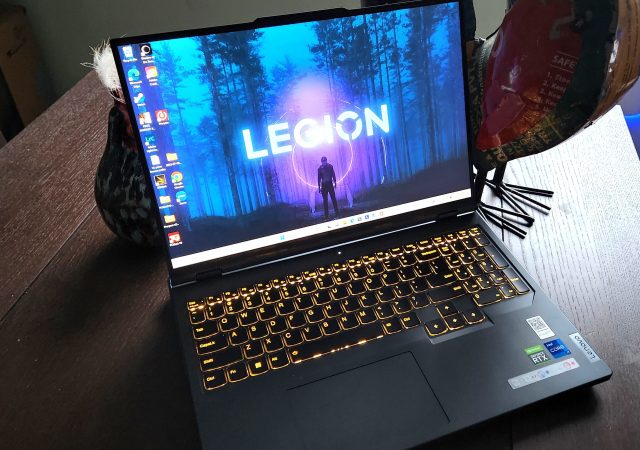Following up on their other models of ultralight mice, today we have Cooler Master’s MM731 wireless ultralight, available now for $89.99 in white and black at the CM store and Amazon. Their MM730, the wired version of this peripheral, is available for 10 bucks less, but of course will lack the wired/wireless versatility we like about the MM731. Before we get into it, here are the specs:
- Up to 19,000 DPI (programmable up to a 7-level cycle)
- PixArt PAW 3370 Sensor
- LK Optical switches rated for 70M clicks
- Mouse Polling Rate: 2.4GHz/Wired Mode: 1000 Hz, BT mode: 125 Hz
- 59g (w/o dongle and braided cable)
- Connection modes: USB wired, 2.4 GHz, Bluetooth 5.1
Specs and Design
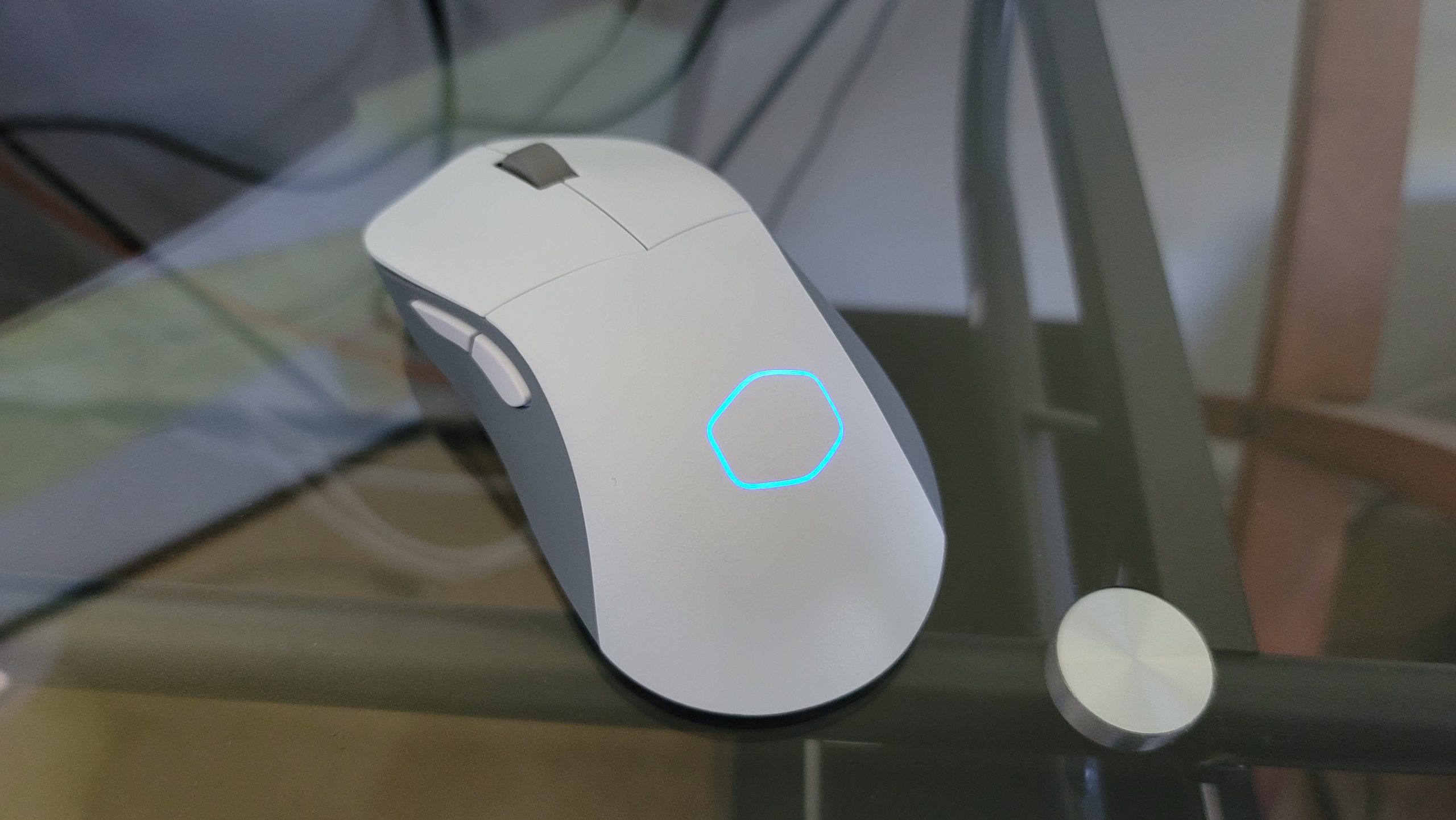 Most of the ultralight mice we’ve taken a look at adopted a “swiss cheese” design, including the MM710/711 and MM720 from Cooler Master. With the MM731 they did add a little bit of weight, but 59g is still quite light compared to many other gaming mice. The shell is solid ABS plastic with PTFE feet. CM advertises this mouse as “ambidextrous optimized for right handers” but we’re not sure how comfortable this would be for lefties. There’s a pronounced curve on the left side of the mouse where the two additional thumb buttons are and outward curve on the right to make it more comfortable for righties. The top has the traditional two buttons and a wheel, powered by LK optical switches with an LED branded hexagon on the body that can be programmed using the MasterPlus+ software. The buttons are a little long which supports both palm and claw players – you can either hit the buttons with your fingertips or your whole fingers.
Most of the ultralight mice we’ve taken a look at adopted a “swiss cheese” design, including the MM710/711 and MM720 from Cooler Master. With the MM731 they did add a little bit of weight, but 59g is still quite light compared to many other gaming mice. The shell is solid ABS plastic with PTFE feet. CM advertises this mouse as “ambidextrous optimized for right handers” but we’re not sure how comfortable this would be for lefties. There’s a pronounced curve on the left side of the mouse where the two additional thumb buttons are and outward curve on the right to make it more comfortable for righties. The top has the traditional two buttons and a wheel, powered by LK optical switches with an LED branded hexagon on the body that can be programmed using the MasterPlus+ software. The buttons are a little long which supports both palm and claw players – you can either hit the buttons with your fingertips or your whole fingers.
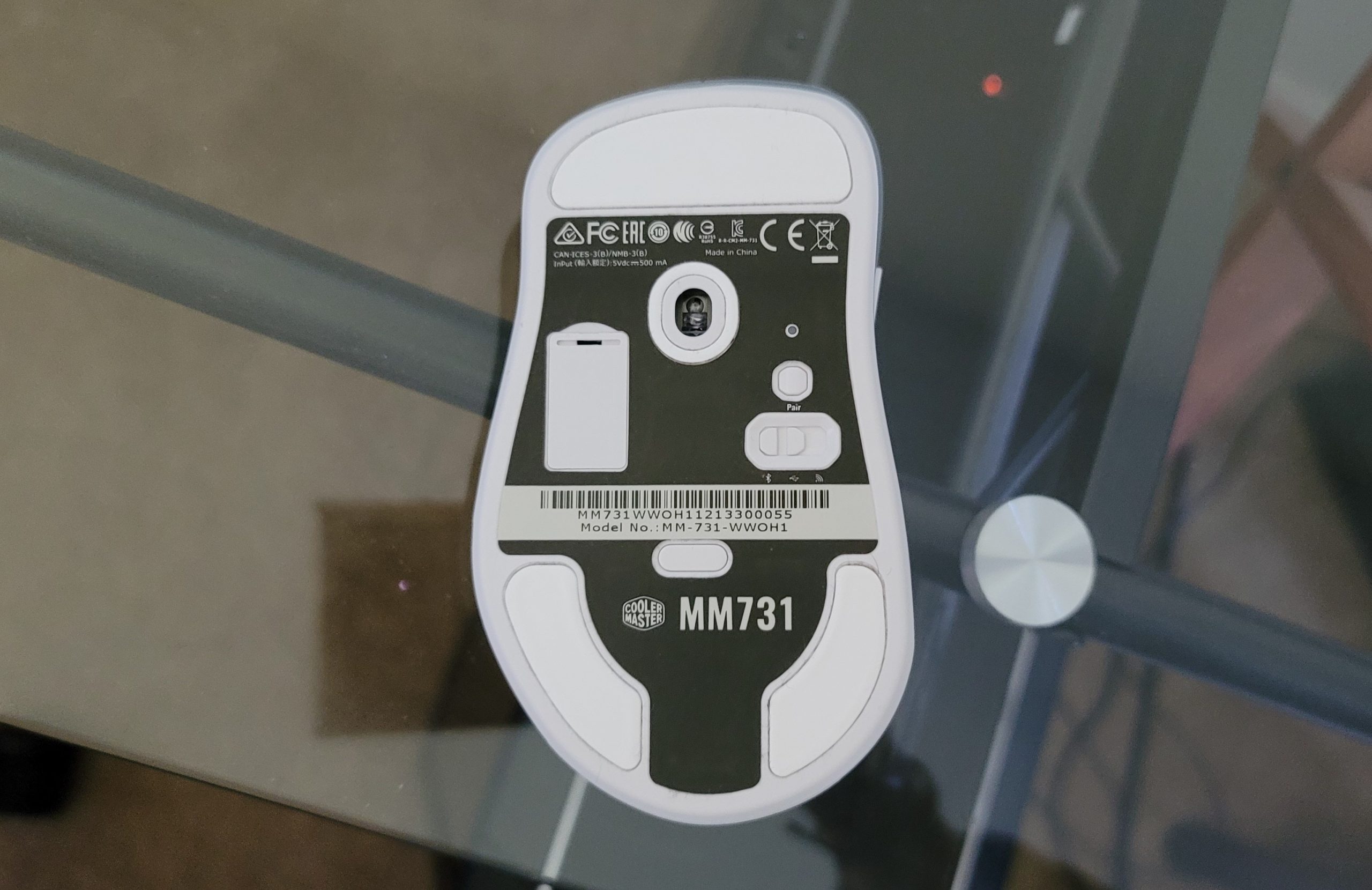 Flipping it over we find the conveniently housed dongle for 2.4Ghz mode (because how many have you lost?), a pairing button, a selection switch to go between the 3 connection modes (2.4GHz, BT, and wired) as well as a button to change the the DPI. This button will let you cycle through up to 7 pre-programmed DPI levels, and indicate the different levels based on a different LED color for each one.
Flipping it over we find the conveniently housed dongle for 2.4Ghz mode (because how many have you lost?), a pairing button, a selection switch to go between the 3 connection modes (2.4GHz, BT, and wired) as well as a button to change the the DPI. This button will let you cycle through up to 7 pre-programmed DPI levels, and indicate the different levels based on a different LED color for each one.
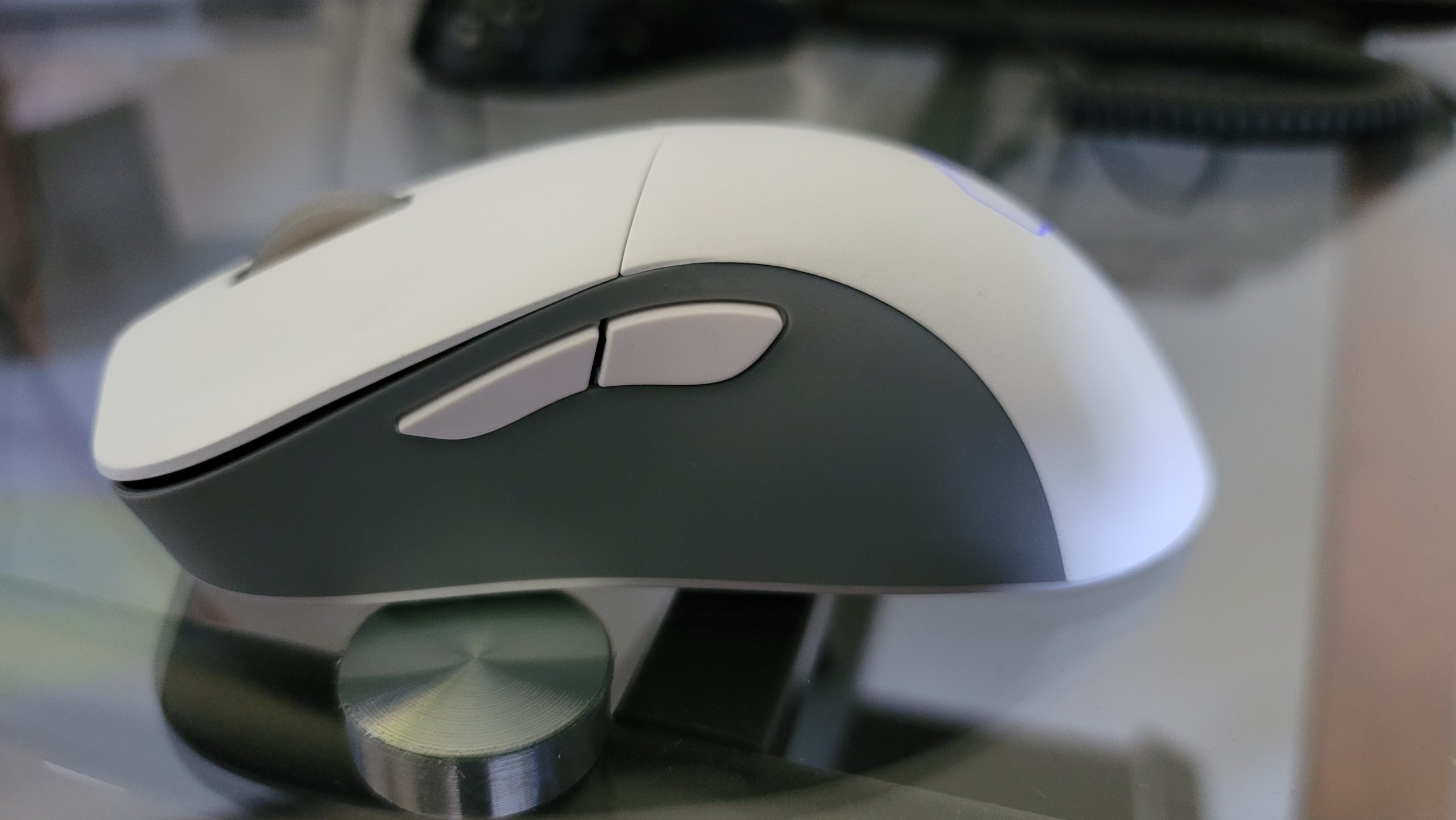 As with all CM devices, this one can be customized using their MasterPlus+ software. This lets the player change the DPI cycle settings, performance options, and set different profiles. My gripe with the software is that if you’re running it in Bluetooth mode, it doesn’t pick the mouse up as a compatible device. MasterPlus+ works in wired and 2.4GHz mode, and the mouse firmware can only be updated via 2.4GHz mode. Plugging in with the very nice included braided USB-C to USB-A cable allows charging through your machine. It’s important after you install the MasterPlus+ software that you go into 2.4GHz mode occasionally to pull down a firmware update for performance fixes and enhancements.
As with all CM devices, this one can be customized using their MasterPlus+ software. This lets the player change the DPI cycle settings, performance options, and set different profiles. My gripe with the software is that if you’re running it in Bluetooth mode, it doesn’t pick the mouse up as a compatible device. MasterPlus+ works in wired and 2.4GHz mode, and the mouse firmware can only be updated via 2.4GHz mode. Plugging in with the very nice included braided USB-C to USB-A cable allows charging through your machine. It’s important after you install the MasterPlus+ software that you go into 2.4GHz mode occasionally to pull down a firmware update for performance fixes and enhancements.
The other generic issue I have with the software is that the window cannot be resized horizontally. So for folks running ultrawides (I have a 44″ UW) the window is just, well… huge.
The upside for Bluetooth mode though is the ridiculous increase in battery life. CM advertises 190 hours of battery life versus 72 on wifi, and on Bluetooth I haven’t been able to get close to 190 hours. I just know I’ve been using it for a month and my battery is still in the green.
Performance
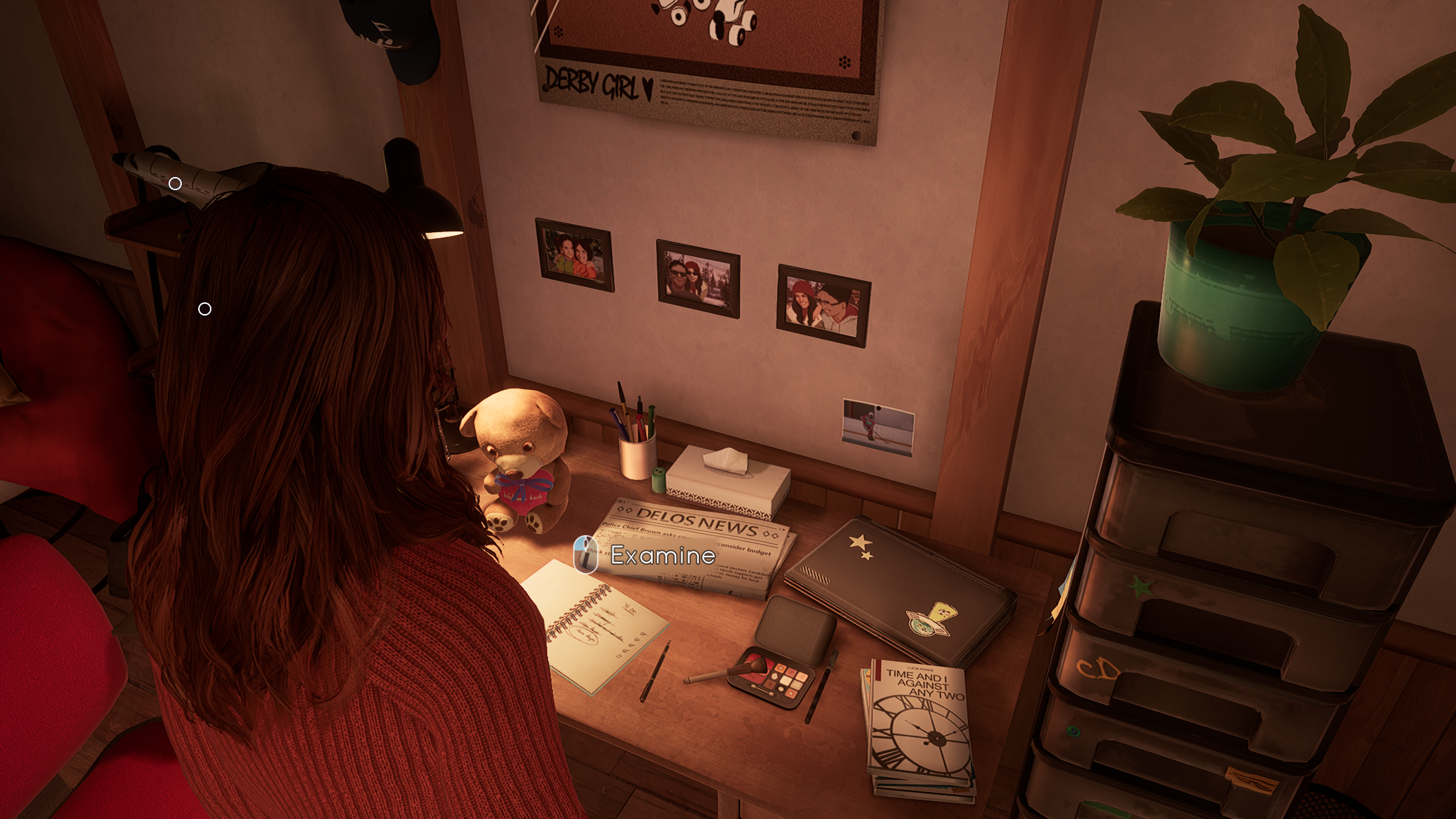 There is one downside that may plague serious FPS players, and that’s the placement of the DPI cycle button. Like the MM720, the button placement is on the bottom of the mouse, and not on the top where the player can click it on the fly. I’m more of an MMO/RPG guy myself but I know that changing up DPI in the middle of an FPS showdown can make a huge difference for sniper classes, where ratcheting the DPI down slows movement to make headshots easier to hit, and speeding it up can allow for quick turns to hit someone behind you. For most other classes of games though that’s really not a huge issue (outside of those really hardcore MMO raiders) and I had zero issues during gameplay.
There is one downside that may plague serious FPS players, and that’s the placement of the DPI cycle button. Like the MM720, the button placement is on the bottom of the mouse, and not on the top where the player can click it on the fly. I’m more of an MMO/RPG guy myself but I know that changing up DPI in the middle of an FPS showdown can make a huge difference for sniper classes, where ratcheting the DPI down slows movement to make headshots easier to hit, and speeding it up can allow for quick turns to hit someone behind you. For most other classes of games though that’s really not a huge issue (outside of those really hardcore MMO raiders) and I had zero issues during gameplay.
We started with something that was relatively simple mouse control with Xbox Game Studios / DONTNOD’s Tell Me Why, their emotional supernatural mystery follow up to the Life is Strange series. Moving around was no issue, and in this genre of game we had the time to change the DPI level at our own leisure to control how quickly or slowly we wanted to move.
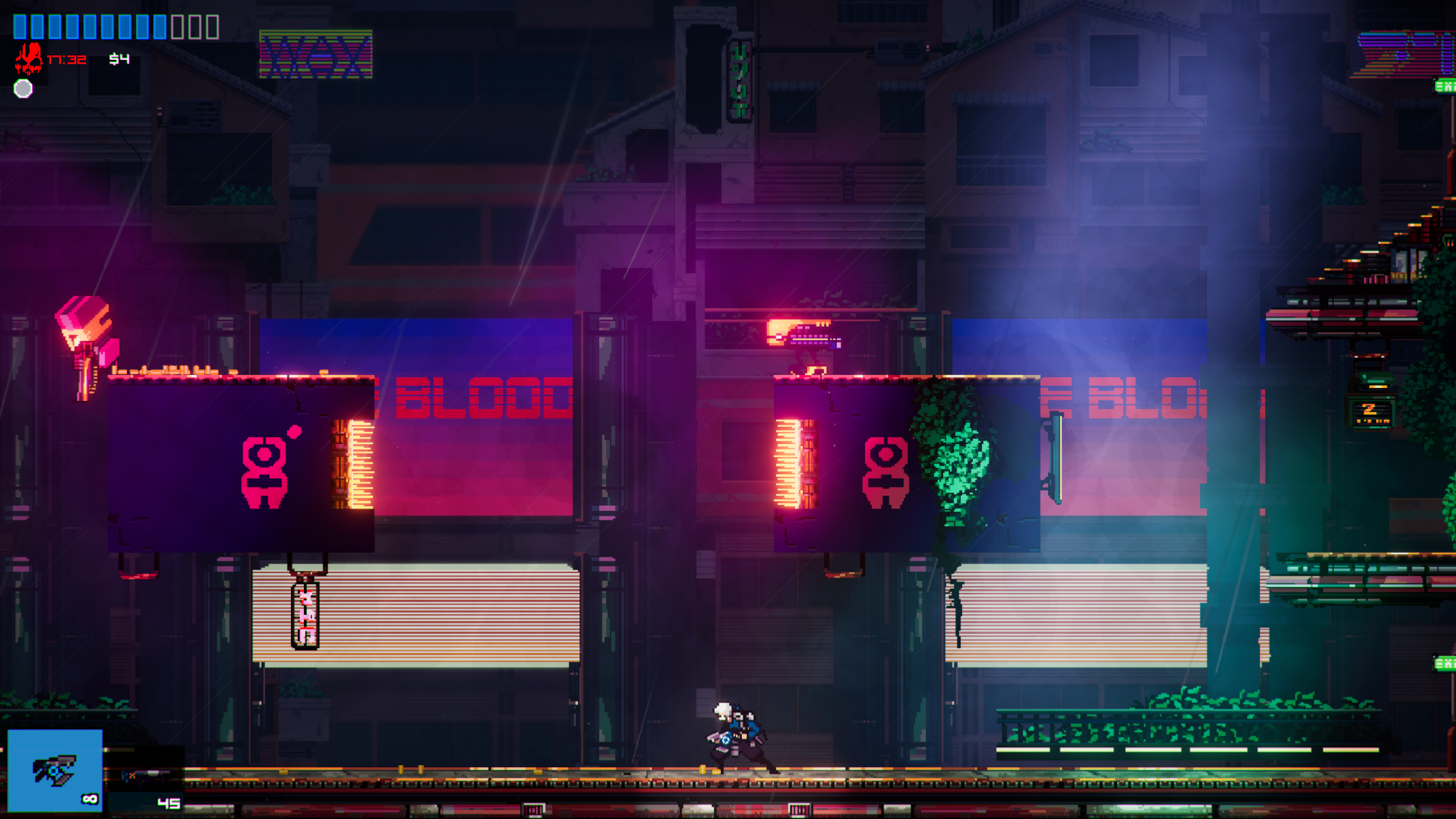 Next up was the fast and frantic Black Future ’88 from Good Shepherd Entertainment / SuperScarySnakes that requires some pretty snappy mouse reaction to even get through the first zone when playing mouse and keyboard style. Again, we had no issues – we even tried changing the lifttoff distance from low to high to make sure this would still work out on smaller gaming surfaces, which it responded well to.
Next up was the fast and frantic Black Future ’88 from Good Shepherd Entertainment / SuperScarySnakes that requires some pretty snappy mouse reaction to even get through the first zone when playing mouse and keyboard style. Again, we had no issues – we even tried changing the lifttoff distance from low to high to make sure this would still work out on smaller gaming surfaces, which it responded well to.
I got the same good results in both Bluetooth and 2.4GHz mode, and that versatility also let me use this single mouse for both my gaming rig and my work laptop.
As far as the external features, the feet of the mouse, while thinner than many other mice I’ve seen, had good glide on my soft gaming mat. And for when they start to wear, CM includes another set of feet in the box to replace them.
Overall
The versatility that Cooler Master’s MM731 provides for wired and wireless scenarios gives this mouse a lot of flex whatever your setup is, and can operate on both your main rig or travel with you when you need a good mouse on the go. While I myself tend to prefer heavier mice (like CM’s MM830), this one glides smooth and has snappy response for whatever you’re doing. The downsides I see with this are as I mentioned the location of the DPI cycle button and the included software itself. But in most scenarios, this mouse will get you where you need to go.



